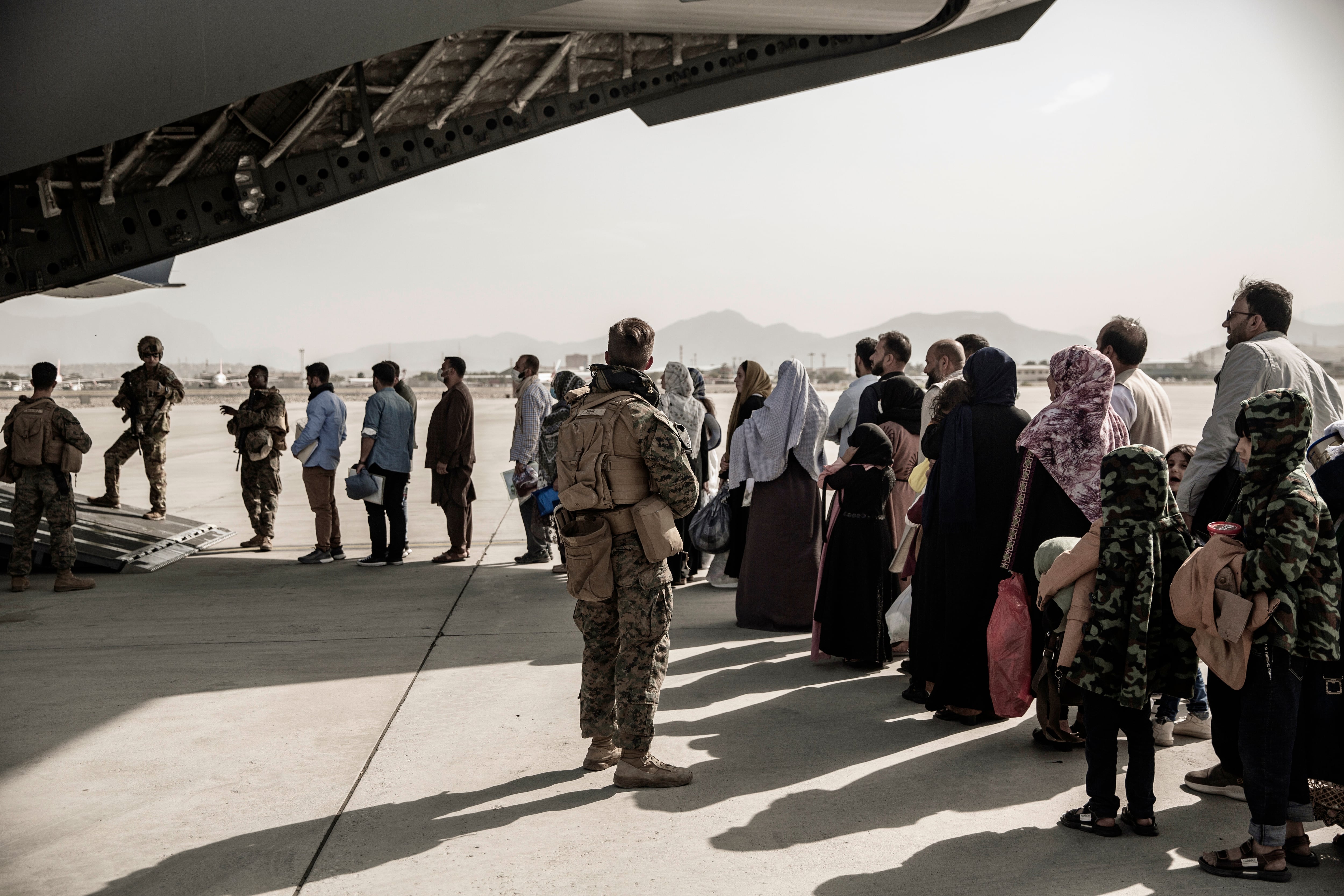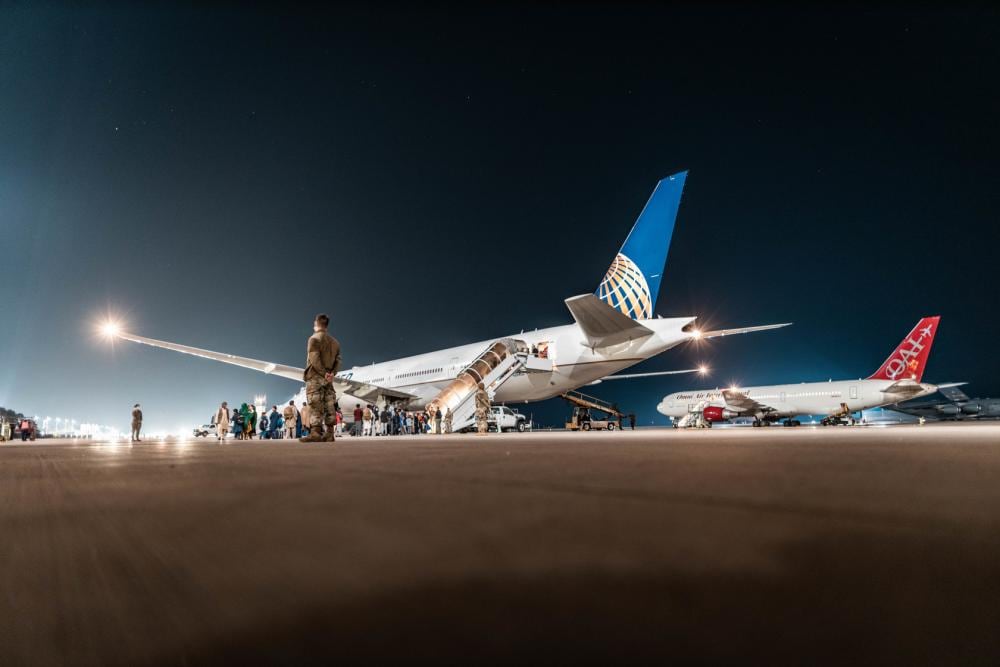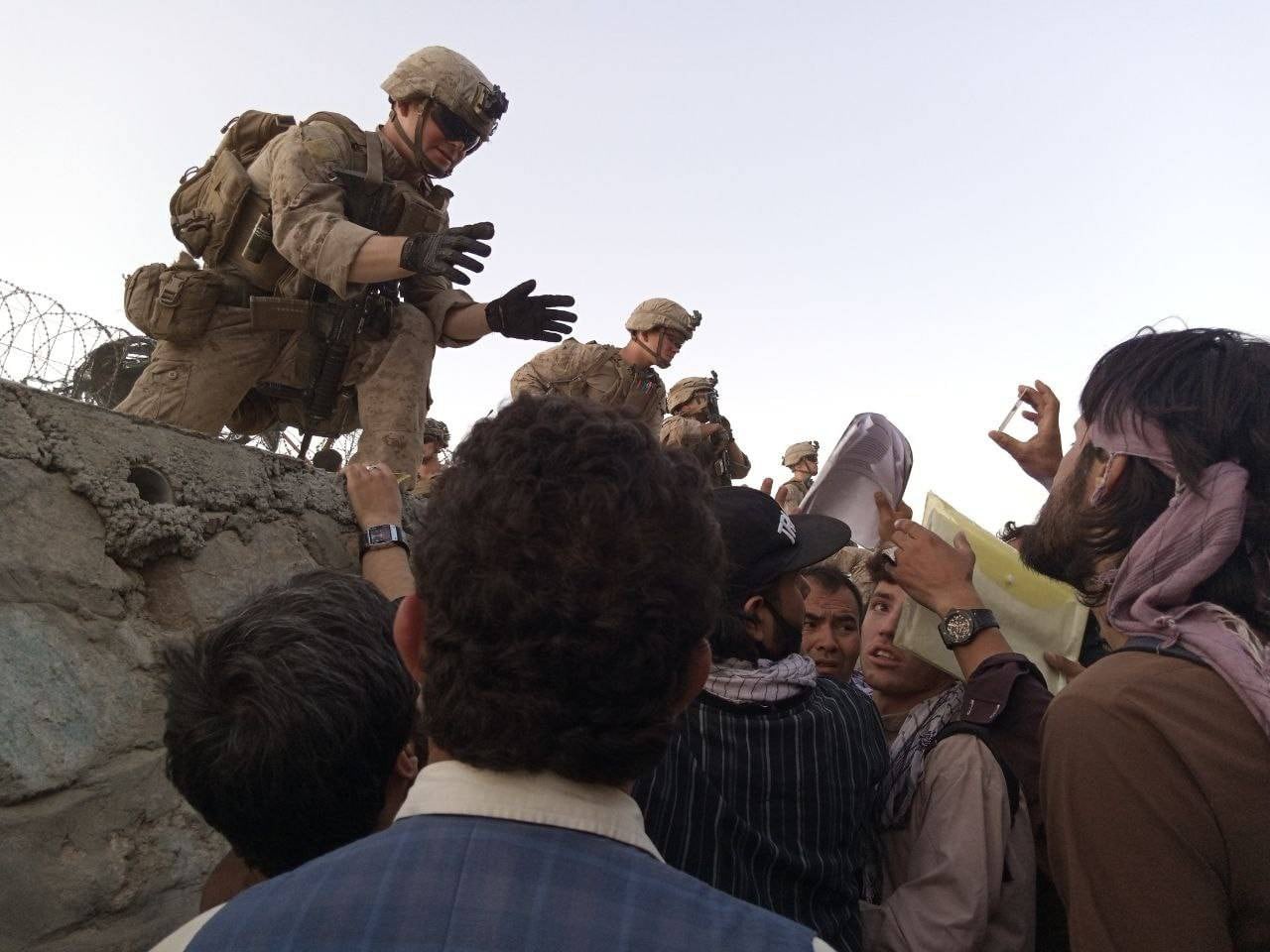Four airmen have earned the Distinguished Flying Cross for evacuating the first noncombatants out of Kabul’s airport as Afghanistan fell under Taliban control again last summer.
A minimal C-17 crew from Travis Air Force Base, California, and Joint Base Elmendorf-Richardson, Alaska, was dispatched to bring in the Army’s 82nd Airborne Division to secure Hamid Karzai International Airport on Aug. 15, 2021 — the same day the Afghan government collapsed in the wake of the American withdrawal.
But their mission quickly turned from one of delivery to one of departure, leading to the rescue of 153 Americans, Afghans and other foreign nationals. Their actions that day marked the start of the U.S. Air Force’s chaotic effort to whisk more than 124,000 people out of harm’s way.
The airmen “successfully delivered 116 soldiers of the 1st Brigade Combat Team, 82nd Airborne Division and its leadership to Kabul,” according to their citations. “Despite real-time intelligence indicating the danger of this mission into enemy-controlled territory, the crew bravely chose to continue at great risk in order to provide vital airfield security in support of [Operation] Allies Refuge.”
In an April 1 ceremony at Travis, three Air Force Reservists from the 301st Airlift Squadron — C-17 commander Lt. Col. Dominic Calderon, copilot First Lt. Kyle Anderson and loadmaster Master Sgt. Silva Foster — plus active duty Senior Airman Michael Geller of the 517th Airlift Squadron, received the medals for their quick thinking and resolve.
Staff Sgt. Dennis Gonzales-Furman, of the 437th Aircraft Maintenance Squadron at Joint Base Charleston, South Carolina, was also honored at the ceremony for serving as the aircrew’s flying crew chief during the mission. He did not earn a DFC.

The Distinguished Flying Cross, the Pentagon’s highest award for extraordinary aerial achievement, is a particularly high honor in the Reserve. Only 45 airmen have received the one, including five mobility airmen.
Separate video of other American airmen driving a massive C-17 Globemaster III cargo plane through a sea of frantic Afghans went viral on social media as a symbol of America’s departure after almost 20 years of war there.
No air traffic control systems were up and running when Calderon and his crew arrived at HKIA, so they landed the plane blind. Geller and Foster prepared the cargo hold for a bumpy landing.
“The conditions that day were like none I had ever seen,” Calderon, who was a major at the time, said in an Air Force release on Sunday. “The airfield was breached and there were mass crowds entering.”
RELATED

Then they got word of Americans and others on the ground who needed to leave immediately. But because they hadn’t planned to bring passengers out with them, the C-17 didn’t have enough fuel onboard to lift a heavier load to their destination.
The jet also suffered from “several … abnormalities” before landing, the citations said; the Air Force declined to list what happened. No ground crews remained at HKIA, so any maintenance issues needed to be patched or deferred.
Completely gassing up wasn’t an option either. The airmen began the evacuation anyway.
“Without available air refueling or emergency depressurization routing, [Calderon] still steadfastly directed the loading of 153 American and allied personnel, commanding the first noncombatant evacuation of the operation as the airfield was breached,” his citation said.

Then-Airman 1st Class Geller again prepped the C-17 for an influx of people and some belongings. Foster cleared the front of the aircraft and readied it for takeoff.
Once everyone had boarded, Calderon taxied through two advancing crowds, “preventing the aircraft from being overrun,” the citation said.
The mob faced severe consequences: Afghans who desperately tried to cling to one outgoing C-17 fell off upon departure; when that jet landed at Al Udeid Air Base in Qatar, human remains were discovered in the compartment that holds the plane’s landing gear after it retracts. If they didn’t leave, they risked persecution or death from the Taliban.
“Anderson provided key inputs and completed aircraft checklists for departure amidst constant distractions,” his citation said. “He successfully executed copilot duties for a [maximum] power takeoff, clearing a large crowd on the runway.”
RELATED

The C-17 had enough liquid oxygen and fuel to reach its next base, but still needed to compensate for the added weight, 349th Air Mobility Wing spokesperson Ken Wright told Air Force Times on Wednesday. “Calderon overcame the shortage by flying at optimum altitudes and ‘maximum endurance’ for nearly all the flight.”
They had less than 16,000 pounds of fuel remaining when they landed at their destination, Wright said.
Once Calderon’s crew left Kabul, they relayed their solutions to airmen who were still on the ground so they could also quickly load passengers and leave. The team arrived safely at their destination.
“You train for this throughout your entire career and you actually hope this moment never comes up,” Foster said in the release.
Rachel Cohen is the editor of Air Force Times. She joined the publication as its senior reporter in March 2021. Her work has appeared in the Washington Post, the Frederick News-Post (Md.), Air and Space Forces Magazine, Inside Defense, Inside Health Policy and elsewhere.




